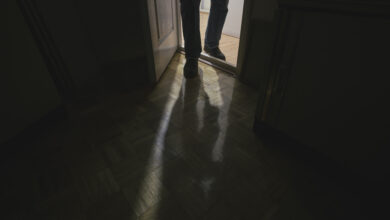Need for better evidence
A new evaluation warns to think twice before using silver dressing. Megan Stoyles reports.
Despite the commercial hype, costly silver dressings should not be routinely used on wounds until there is better evidence to support their use, say UK researchers and Australian wound care experts.
An evaluation published in the British Drug and Therapeutics Bulletin concludes that the UK National Health Service expenditure on silver dressings is “difficult to justify in the light of existing data”.
“Silver dressings are expensive and there have been few high-quality clinical trials to establish whether they have advantages over other, cheaper, alternatives,” says the evaluation.
It says routine use of silver dressings is not justified on clinical or cost-effectiveness grounds as treatment for uncomplicated venous leg ulcers. It says simple dressings and compression bandaging are more appropriate for this.
It also says silver dressings should not be used on acute wounds as there is weak evidence to suggest that they delay wound healing.
“There is a better case for using silver dressings for patients with infected burns, but even here, the evidence base is weak,” it concludes.
The evaluation also discusses the potential for patients to experience hypersensitivity or toxicity due to absorption of silver, and the possibility of dressings contributing to the development of resistant microbes.
Jan Rice, coordinator of Wound Education World of Wounds, at LaTrobe University in Victoria, agrees.
“Companies have done a very good job of selling silver as ‘the best’, but have scared some services into thinking they are not utilising best practice unless it is used,” she says.
She is concerned at the overuse of silver dressings in aged care. “Silver would only be considered as first choice for usage in relation to treatment of rheumatoid or vasculitic ulcers, as there is some evidence that silver is anti-inflammatory.”
She notes that residential aged care services could not normally afford to use silver dressings because of the cost: “It could cost up to $70 a week for ongoing use.”
Rice says that the use - and misuse - of silver in aged care often occurred when a patient was discharged from an acute setting into home or residential care, with the acute nurse telling the district nurse or facility to use silver.
“An aged care facility could feel disempowered with this sort of direction; they would not be 100 per cent confident to ignore that advice.”
“The patient or family ends up paying for the cost of silver.”
“The suppliers might say it’s the best, but other treatments are as good,” she advises.
“Do the basics first: with good wound cleansing and addressing the underlying aetiology of the wound and other factors known to impact on normal wound healing most wounds follow a normal sequence of repair.”
New Zealand-based clinical epidemiologist, Dr Andrew Jull of the University of Auckland who is an editor of the Cochrane Wounds Group agrees with the UK evaluation against silver dressings.
“This is a well reasoned description of the evidence base for silver dressings,” says Jull.
“Silver is anti-bacterial in bench-top terms but when it comes to real patients, the quality of evidence is very low.”
He believes silver dressings should not be used routinely in leg ulcers and diabetic foot ulcers.
“In other scenarios, I would always say it’s a second choice, not a first-line treatment,” says Jull.
www.dtb.bmj.com
Email: [email protected]





